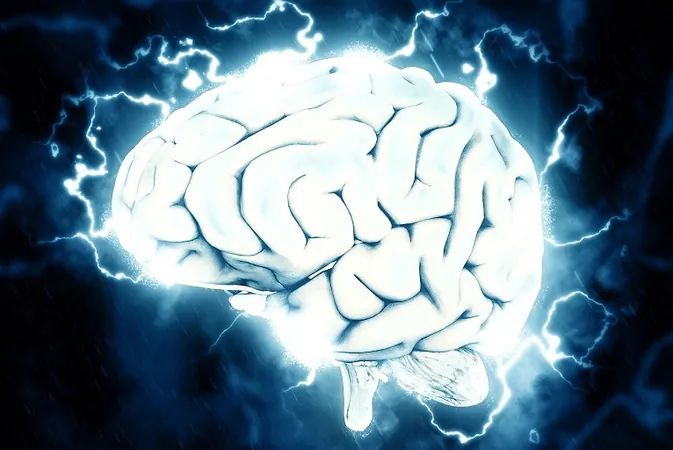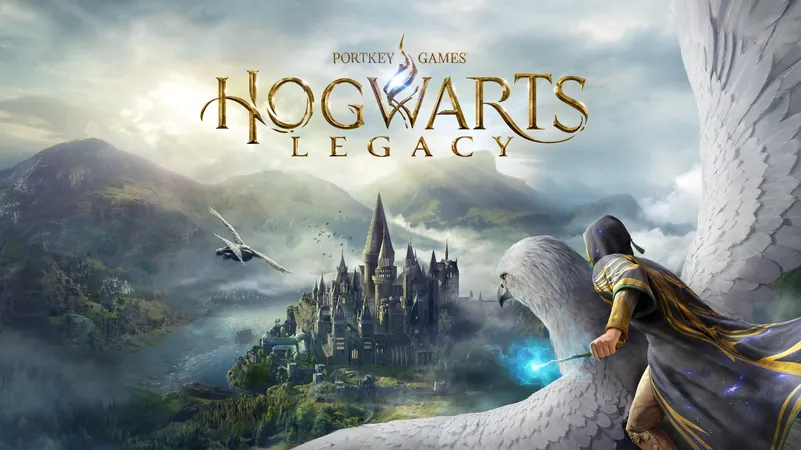
Transforming Stroke Recovery: How Vagus Nerve Stimulation Is Revolutionizing Motor Function
2025-05-08
Author: Wei Ling
Breakthrough Findings in Stroke Rehabilitation
In a groundbreaking announcement, Microtransponder has unveiled new research published in the prestigious journal *Stroke*, highlighting the astounding long-term benefits of paired vagus nerve stimulation (VNS) therapy using their innovative Vivistim system for chronic stroke recovery. This study reveals that stroke survivors who underwent VNS treatment for upper-extremity difficulties saw marked improvements in motor function, daily activities, and overall quality of life for over a year following the therapy.
VNS Therapy: A Clinically Proven Path to Recovery
Titled *Long-term outcomes of vagus nerve stimulation paired with upper-extremity rehabilitation after stroke*, this analysis has roots in the pivotal VNS-REHAB trial—an extensive, multicenter, triple-blinded randomized controlled study that previously gained attention after its publication in *The Lancet*. This trial was instrumental in securing FDA premarket approval for the Vivistim system in 2021, signifying a major advancement in stroke rehabilitation.
Remarkable Results: Lasting Improvements After Therapy
Participants in the study maintained significant progress a year after completing paired VNS therapy and upper-extremity rehabilitation. Assessments revealed noteworthy improvements in motor capabilities, with metrics such as the Fugl-Meyer assessment and the Wolf motor function test showing average enhancements of 5.23 and 0.5 respectively. An impressive 66.2% of the 74 participants reported positive responses to the VNS therapy.
Enhancing Quality of Life Beyond Motor Functions
Patient-reported outcomes further highlighted advancements in daily activity engagement and quality of life through various validated measures, including the motor activity log and stroke-specific quality-of-life assessments. Dr. Teresa Jacobson Kimberley from Massachusetts General Hospital emphasized, “These long-term benefits are exceptional, as sustained improvements are uncommon in chronic stroke recovery.”
The Game-Changer: Vivistim Therapy in Action
Currently, the Vivistim device is implanted in stroke survivors, allowing therapists to pair VNS with high-repetition, goal-oriented functional exercises to promote neuroplasticity. The typical regimen involves participating in Vivistim therapy during 90-minute sessions thrice weekly for six weeks, augmented by a self-initiated therapy option where patients can activate VNS in their daily lives simply by swiping a magnet over their implant.
A New Standard in Stroke Care?
Microtransponder asserts that these promising findings indicate self-initiated VNS therapy not only refines motor skills but also ensures lasting improvements in functionality. Richard Foust, CEO of Microtransponder, states, “This evidence indicates that stroke recovery must extend beyond acute intervention. The Vivistim therapy can set a new standard of care for ischaemic stroke survivors beyond six months post-stroke.”
Enduring Hope Despite Challenges
Conducted from October 2017 to June 2022, the VNS-REHAB trial managed to showcase sustained improvements even amidst the disruptions caused by the COVID-19 pandemic. Crucially, variables such as sex, age, stroke side, and duration since the stroke did not significantly influence the outcomes, reinforcing the therapy’s broad applicability and safety profile.
This revolutionary approach in stroke rehabilitation raises hope for countless individuals striving to regain their independence and enhance their quality of life.




 Brasil (PT)
Brasil (PT)
 Canada (EN)
Canada (EN)
 Chile (ES)
Chile (ES)
 Česko (CS)
Česko (CS)
 대한민국 (KO)
대한민국 (KO)
 España (ES)
España (ES)
 France (FR)
France (FR)
 Hong Kong (EN)
Hong Kong (EN)
 Italia (IT)
Italia (IT)
 日本 (JA)
日本 (JA)
 Magyarország (HU)
Magyarország (HU)
 Norge (NO)
Norge (NO)
 Polska (PL)
Polska (PL)
 Schweiz (DE)
Schweiz (DE)
 Singapore (EN)
Singapore (EN)
 Sverige (SV)
Sverige (SV)
 Suomi (FI)
Suomi (FI)
 Türkiye (TR)
Türkiye (TR)
 الإمارات العربية المتحدة (AR)
الإمارات العربية المتحدة (AR)